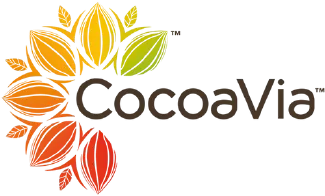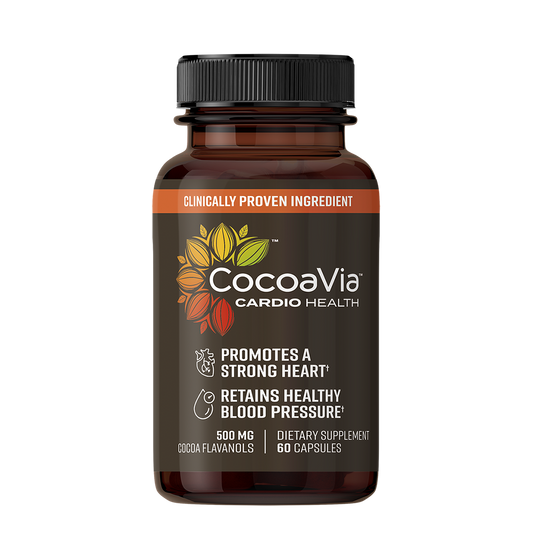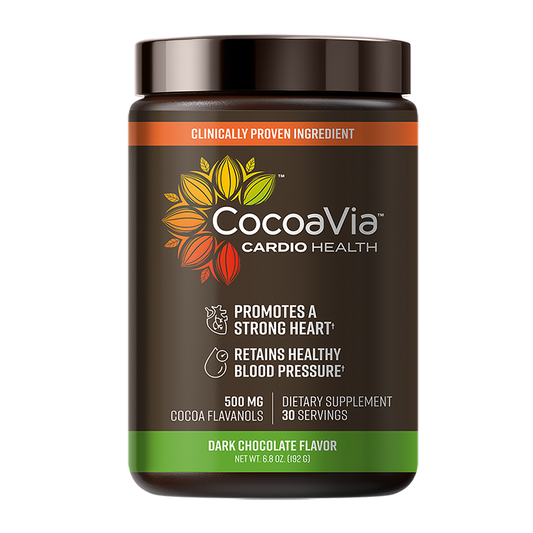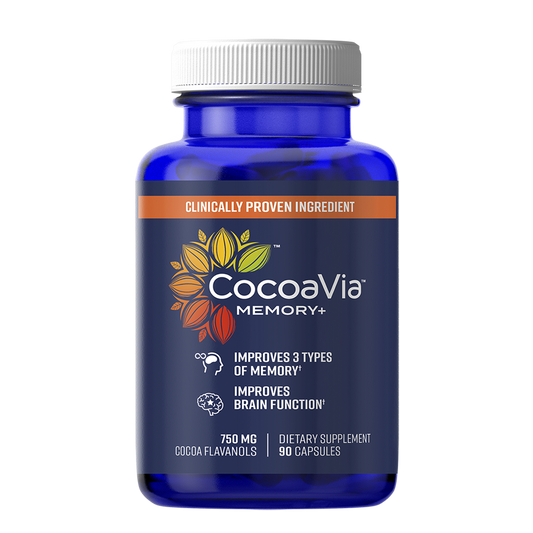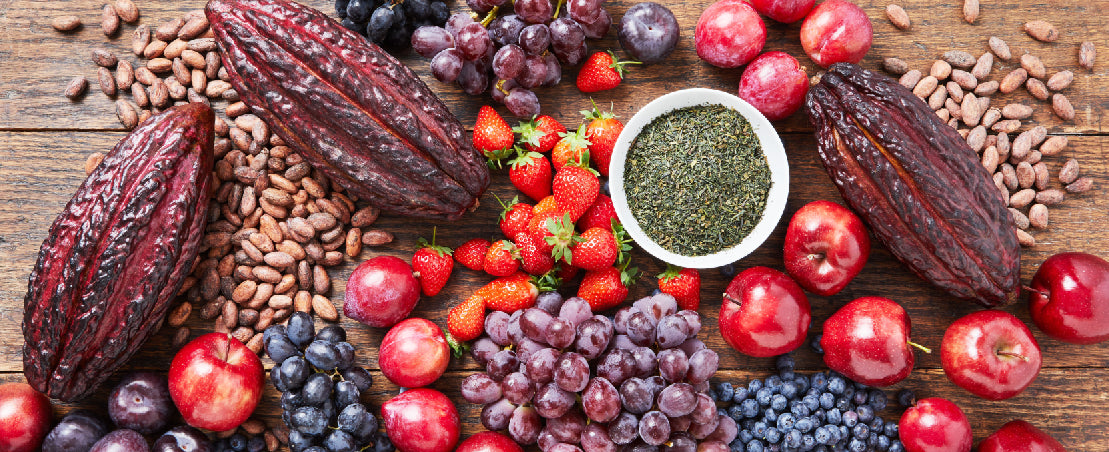
Guide to Epicatechin: Benefits, Sources & More
Epicatechin. It’s a big word with even bigger promises to improve your body—everything from exercise performance to heart health and blood flow.
But before you fill your online cart with products vowing to wow you with supreme workout results, let’s talk about the real data behind epicatechin and what it can (and can’t) do for you.
-
Key Takeaways:
- Epicatechin is a bioactive found in a distinct subgroup of flavonoids called flavanols.
- Epicatechin is readily bioavailable, meaning your body absorbs it quickly.
- Cocoa flavanols, including epicatechin, support healthy blood flow, which helps your vital organs and muscles get the oxygen and nutrients they need to perform their best.
- You can get epicatechin in food and drinks like grapes, apples and tea, but the amount of epicatechin can vary from source-to-source.
-
- Before you buy a supplement for epicatechin, make sure you know where the ingredients originated.
- Remember that food can lose cocoa flavanols and epicatechin depending on how they are processed or cooked.
- Check your supplements for independent testing lab approval before you buy!
- CocoaVia™ is a great source of cocoa flavanols and epicatechin, is traced from the moment the bean is harvested to ensure the very best quality!
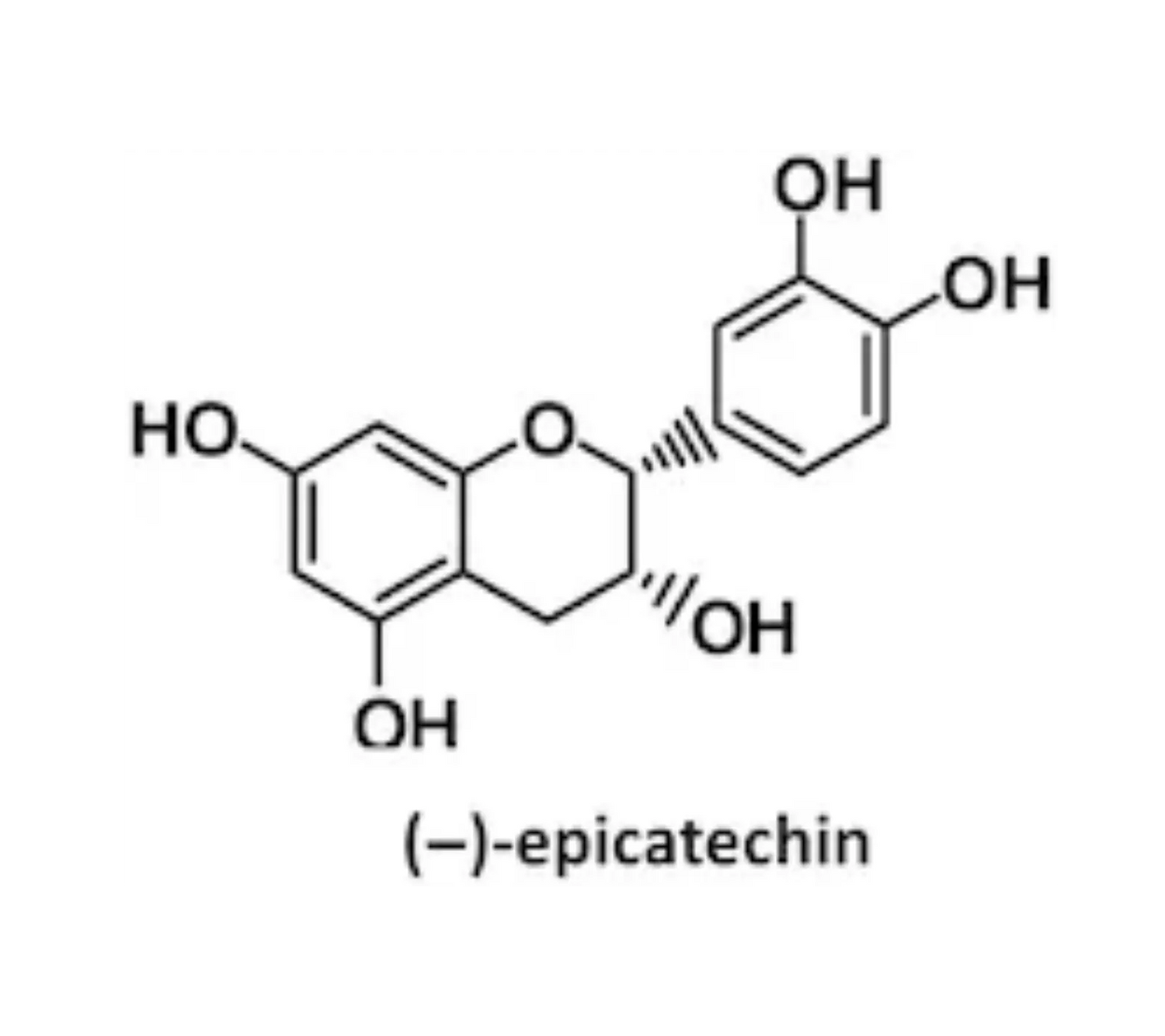
What is Epicatechin?
Epicatechin (referred to as “(–)-epicatechin,” or “minus epicatechin” when found in foods) is a bioactive found in a distinct subgroup of flavonoids called flavanols.
While epicatechin isn’t new—it has been identified for decades—in the last 10 years or so the research focus on epicatechin has been more intense. This has given us a better understanding of epicatechin’s potential impacts on the human body, which in turn has increased consumer interest in how to use it for optimizing health.
The Cocoa/Epicatechin Connection
Without getting too scientific, flavanols are a subclass of flavonoids and can be found in a variety of plants. The unique mixture of flavanols found in cocoa is collectively called “cocoa flavanols,” and epicatechin is one of the simple flavanols in the cocoa flavanol “collection.”
In other words, epicatechin is a cocoa flavanol, but it’s just one form of flavanol found in cocoa.
Why Epicatechin?
Without getting too scientific, flavanols are a subclass of flavonoids and can be found in a variety of plants. The unique mixture of flavanols found in cocoa is collectively called “cocoa flavanols,” and epicatechin is one of the simple flavanols in the cocoa flavanol “collection.”
In other words, epicatechin is a cocoa flavanol, but it’s just one form of flavanol found in cocoa.

Epicatechin Benefits
As a key flavanol in the powerful mix of cocoa flavanols, epicatechin offers lots of health benefits and is also easily absorbed by your body! One benefit of the epicatechin in cocoa is that it helps increase nitric oxide levels in your body.
Research has proven over and over again that daily consumption of cocoa flavanols helps support heart health, brain health, and whole-body health—and that’s hard to beat!
Nitric oxide (NO) has a number of positive health benefits for your body:
-

Cardiovascular health:
NO helps relax your arterial walls, which is critical for maintaining healthy blood pressure levels and increasing blood flow throughout your body.
-

Brain health:
By promoting healthy blood flow to your brain, NO helps keep your brain oxygenated, which supports cognitive function.
-

Healthy Skin:
In addition to nourishing your body on the inside, healthy blood flow keeps your skin healthy and hydrated, so you can look your best on the outside as well!
-

Total body performance:
Healthy blood flow allows your body to deliver the high level of oxygen and nutrients that vital organs, muscles and tissues need to perform at their best – which can be especially helpful during an intense workout!
Foods & Sources Containing Epicatechin
Back to the epicatechin-flavanol connection: some of the foods we’re most likely to eat that have flavanols contain epicatechin too. And, lucky for us, there are ways we can get epicatechin as part of a regular, healthy diet. Here are a few foods with epicatechin, along with their average values (based on the 2018 USDA Flavonoid Database).
-

Tea
Cold or hot, sweet or not, tea can be one way to work some epicatechin into your diet. But this is a case where tiny details like leaf size and type matter: 8 ounces of green tea is a better bet, with 10-20 mg of epicatechin per serving.
-

Grapes
Grapes aren’t half bad in the epicatechin department either! One serving (126 grams) of white or green grapes have 5-10 mg of epicatechin, but if you’re tempted to go for grape juice instead, don’t—at least not for epicatechin benefits—most grape juices zero out.
-

Apples
One a day may keep the doctor away, but adding an apple to your daily fruit intake will bring the epicatechin front and center to your diet! A standard large apple with skin (242 grams) has 15-20 mg of epicatechin per serving. And if you’re feeling saucy, applesauce boasts nearly as much epicatechin as a raw apple.
-
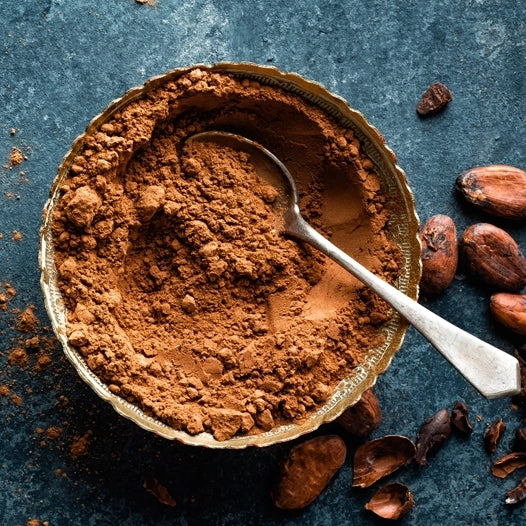
Cocoa
Cocoa comes in strong when it comes to epicatechin— so even your favorite cocoa beverage can offer some epicatechin. But be warned, processing matters! Approximately one tablespoon of raw cocoa powder has 10-15 mg of epicatechin. However, if you choose an alkalized variety of cocoa (which gives us the rich chocolatey taste with which we’re familiar), the epicatechin content drops to 1-3 mg per tablespoon because the process of alkalization zaps much of the epicatechin.
You may be wondering if foods like citrus fruits and bananas are good sources of epicatechin. While these foods boast a bevy of nutritious benefits, they aren’t your best source for epicatechin.
Which brings us to another important point: you’ve probably heard that cooking and processing foods can change the amount of nutrients they retain. The same goes for flavanols, including epicatechin, so do your research on how much you’re actually getting when you eat a certain food. The USDA has a terrific database that gives details on the amounts of flavanols and epicatechin you can find in certain foods.
Your Go-To for Epicatechin: Cocoa Flavanols
Cocoa flavanols are hands-down one of the best ways to boost your intake of epicatechin, because every serving of CocoaVia provides 500 mg of cocoa flavanols, of which 70 mg is (–)-epicatechin. The cocoa flavanols in CocoaVia have been proven time and again to be an efficacious and safe way to support whole-body health. Can we back up that swagger with a little proof? 20-plus years of scientific research says yes.
How so? Cocoa flavanols have been proven to increase the body’s nitric oxide levels. This increase in nitric oxide helps keep your arteries flexible and your blood vessels healthy, which in turn promotes healthy blood flow. That flow supports oxygen and nutrients everywhere in your body—including your muscles—helping your body perform at its best from head to toe.
Epicatechin Supplements
While there are some supplements on the market that claim epicatechin as an ingredient, it pays to be an educated supplement-shopper. Everything from the quality, to the source, to the type of ingredients can vary wildly from supplement to supplement. As a consumer, how do you know what’s a great buy—and what’s best left on the shelf?
Check the label
Before you buy, check the label of the supplement—how much epicatechin does it have?
Choosing CocoaVia™ supplements means you’ll see on the label that it contains 450 mg of cocoa flavanols. And you can trace the cocoa right back to Indonesia, where we’ve been sourcing our beans for years. We know the farmers who grow and harvest the freshest cocoa beans for our products, and thanks to our Cocoapro® process, we know we’re preserving the flavanols and epicatechin directly from the raw cocoa beans all the way to your door!
Look for a seal of approval from an independent expert source
Additionally, a third-party independent verification is something you should always look for before you buy supplements. These quality “seals of approval” will give you confidence that the supplement’s claims have been tested and confirmed by an outside source.
-
Shop Epicatechin Rich CocoaVia™ & Boost your Nitric Oxide Supply
If you want a supplement that will:
- Support your body with cocoa flavanols, including (–)-epicatechin
- Increase nitric oxide to help your body
- Back its claims with an independent quality seal of approval
… then put CocoaVia™ in your cart today!
-

Find the Right CocoaVia™ Product for you
-
CocoaVia™ Cardio Health Capsules
Support heart health with concentrated capsulesRegular price From $45.99 $1.53 per dayRegular price Sale price From $45.99 $1.53 per dayUnit price / per -
CocoaVia™ Cardio Health Powder
Support heart health with every scoopRegular price From $46.99 $1.57 per dayRegular price Sale price From $46.99 $1.57 per dayUnit price / per -
CocoaVia™ Memory & Focus Capsule
Keeps you focused & boosts memoryRegular price From $49.99 $1.67 per dayRegular price Sale price From $49.99 $1.67 per dayUnit price / per -
CocoaVia™ Memory+ Supplement
Improve your memory in just 8 weeksRegular price From $49.99 $1.67 per dayRegular price Sale price From $49.99 $1.67 per dayUnit price / per
